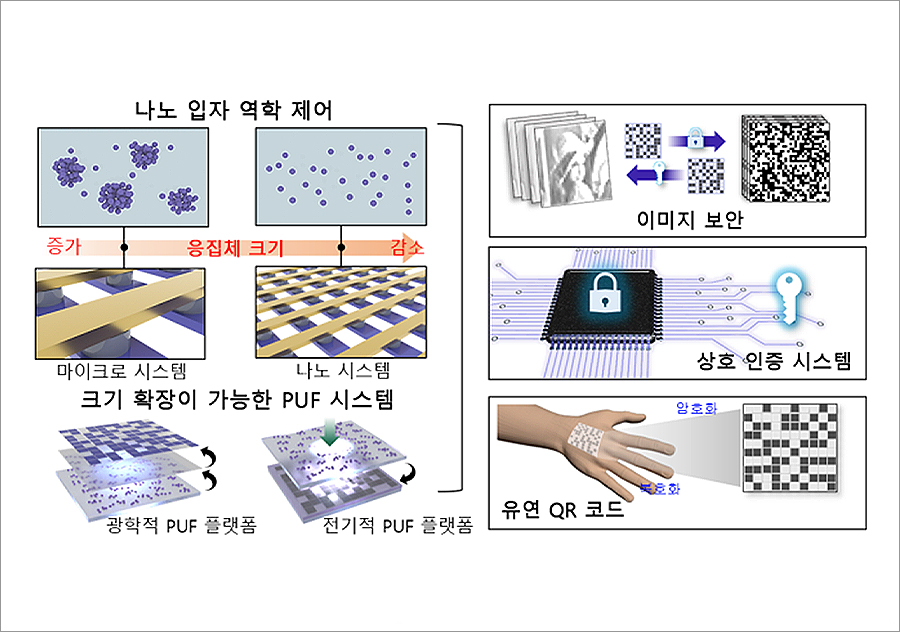Professor Lee Shin-hyung's research team has developed a new technology for wearable hardware security devices that can be expanded to various sizes

- Show off security technology that can be applied from micro to nano electronic devices
- Simultaneously developing anti-counterfeiting technology that cannot be copied optically and electrically
A research team led by Professor Lee Shin-hyung, University of Seoul Department of Advanced Convergence and Intelligent Semiconductor Department announced on the 8th that it has developed wearable hardware security device technology using nanoparticle behavior control technology through joint research with a research team led by Professor Na Jun-hee of Chungnam National University The results of this study were published online on September 29 in "ACS Nano," the top SCI journal in the nano field, with Baek Chang-jae, a master's student in University of Seoul's Department of Intelligent Semiconductor, as the first author, and Professor Lee Shin-hyung and Professor Na Jun-hee as corresponding authors.
This research is an important technology that can respond to frequent information leakage and artificial intelligence-based cyberattacks, and has succeeded in developing hardware security devices applicable to wearable electronic devices ranging from micro to nanometers in size.

▲ Study Summary Conceptual Chart
"Physical Replication Prevention Technology (PUF)" is a technology that provides powerful anti-counterfeiting functions by utilizing physical randomness that occurs in the manufacturing process of electronic devices. However, existing PUF technology had limitations in expanding the size of devices due to physical irregularities only in certain sizes.
Through this, it was possible to form a collection of particles in various sizes by controlling the attraction between particles, and a platform technology was proposed to systemize hardware security devices capable of preventing optical and electrical replication.

▲ From left, master's student Baek Chang-jae, professor Lee Shin-hyung of University of Seoul, and professor Naju Hee of Chungnam National University
The newly developed hardware security device can be applied to various fields such as anti-counterfeiting wearable devices, security key generation, and image encryption system.
Professor Lee Shin-hyung explained, "The wearable hardware security technology developed by this study can be applied from micro to nano-scale and is an innovative technology that can also be used to develop optical and electrical forgery prevention technologies."
This study was conducted with the support of the Personal Basic Research Support Project (Medium-sized Research) and the Basic Laboratory Support Project supported by the Ministry of Science and ICT and the Korea Research Foundation.







